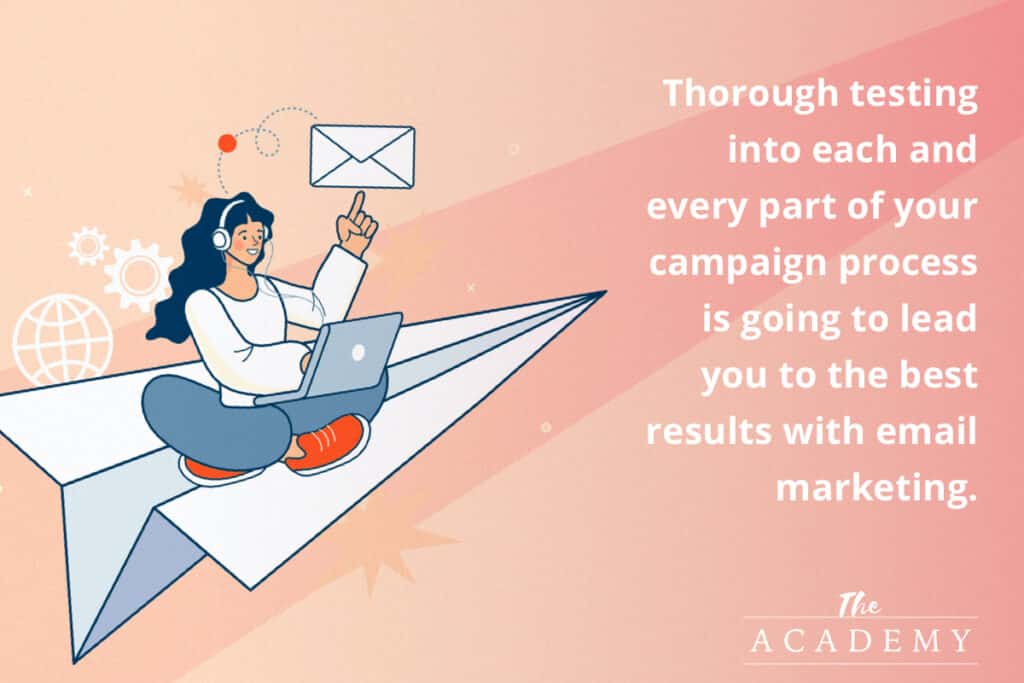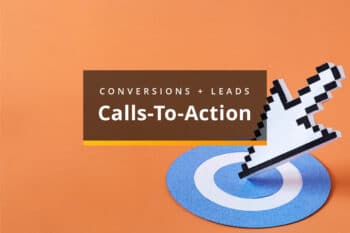
Email marketing is a particularly effective way of building and connecting with an audience. If you manage to get someone onto your email list, that person has already signaled some interest in your brand; so sending them relevant, interesting messages is a huge opportunity to take the next step in moving them closer to making a purchase.
However, when you send out those messages, you have to get over one big hurdle: getting the messages opened in the first place. The average person gets countless emails each day, and many of them are deleted before they are even opened. How do you keep your emails out of the “Trash” file? That’s where great subject lines come into the picture. Writing a winning subject line can be the difference between a solid open rate and good results, and an email campaign that goes nowhere fast.
With this article, we’d like to highlight some of the basics of writing good email subject lines. There is a bit of an art to this task, so you will need to practice to build up your ability, but our tips should give you the head start you need.
The Goal of an Email Subject Line
There is just one goal when writing a subject line in an email: to get that email opened by as many recipients as possible. That’s it. You are just trying to get the email opened. It’s unlikely that you’ll make any sales with a subject line alone, so you aren’t trying to close the deal with these few words. Instead, you want to present something valuable enough that the person on the other end of the email wants to click on it to see what it’s all about.
This is true for both marketing and cold emails. With a marketing email that is going out to your list of subscribers, you want a high open rate, so the recipients can see what it is you are offering and hopefully click on a link to explore the offer further. For cold email, you might be trying to make connections and grow your status in the industry—but the goal is still to get the receiver of the email to open it and learn more.
Dial in the Perfect Length
One of the keys to writing good email subject lines is to get the length just right. If you don’t write much at all—just a word or two—you won’t be able to get much of a message across. At the same time, if you write too much, email recipients might not bother reading the whole thing. Worse yet, depending on the device they are using, the entire subject line might not be displayed on the screen.
So, what’s the sweet spot for how long your subject lines should be? 82% of marketers send emails whose subject lines do not exceed 60 characters (Convince & Convert). That’s a good maximum character count to follow. Additionally, here are some tips:
- Consider your audience. As you might imagine, shorter email subject lines tend to work better on mobile devices, so it’s good to think about what kinds of devices your target audience is likely to be using. When emailing a typical consumer market, you can assume that many readers will be using a mobile device, and that percentage is only set to increase. However, if you are focused on B2B messaging, you might have more readers on desktop computers, so longer subject lines may be perfectly suitable.
- A starting point. There is no hard and fast rule for how long the subject line should be, but aim for between 40 and 50 characters as a starting point. This is a good middle ground and it makes for a good place to start when writing some subject lines. It might take a little bit of practice to master the art of communicating your message in this brief space, which amounts to little more than just a few words.
- Always adjust. While the character count mentioned above is a good starting point, it shouldn’t be your finish line. The best way to dial in the right length of the subject line to serve your audience is to test lines and figure out what works and what doesn’t. In other words, you need to track the performance of your emails in terms of open rate and compare that performance against the length of the subject line. Do you see an obvious trend or correlation? This data will be more important than any other advice you can get on this topic, so carefully monitor ongoing performance and adjust accordingly.
Ask a Question or Make a Statement?
While the length of your subject line is an important element, it’s perhaps more important to figure out what you are going to say and how you are going to say it. On this point, you have two basic options: 1.) To flatly make a statement or 2.) To ask a question. Each of these approaches has merit, and it’s likely that you’ll want to use them both in your campaigns.
On the one hand, making a statement is effective because it gets right to the point regarding what you have to offer.
For example, you could state something like “Open This Email to Get 20% Off”. That gets right to the point and it gives the recipient a valuable reason to open the message and redeem the offer. You’ll likely want to opt for a direct statement in the subject line when the purpose of the message is simple, and you want to get your point across immediately.
Using plain statements can be useful but asking a question with your subject line can also be a great technique. With this plan, you are trying to grab the interest of the reader and lead them into the email through curiosity. Basically, the idea is to come up with a question that your recipient will want to know the answer to and won’t be able to resist clicking on the email as a result. It’s usually a good idea to make this question personal, such as “Do You Want to Grow Revenue By 10% This Month?”. Such a question is hard to resist for a business owner or manager who is forever looking for ways to boost the bottom line.
Avoid the Dreaded Bait and Switch
Perhaps the most important rule to follow when it comes to writing email subject lines is to deliver on your promises and not trick your readers. While you can use the subject line to lead the recipient into clicking, you then want to back up what you said in the subject and not offer an email that is about something entirely different. This kind of trickery might temporarily boost your open rates, but it will backfire in a big way… Your reputation will be harmed, and you will have a hard time getting anyone to open future emails.
For an example, let’s go back to a subject line we mentioned earlier. If you use the line “Open This Email to Get 20% Off”, you better be certain that you offer a coupon code or some other way of easily claiming 20% off of an upcoming order. If your email makes it hard to figure out where that discount is going to come from, or it doesn’t even mention the discount at all, you will have misled your reader.
Beyond the desire to treat your subscribers well and conduct business with honesty, there is also the matter of deliverability to consider here. You don’t want to find yourself in a situation where too many of your messages are being marked as spam by recipients, but that’s exactly what may happen if you are being tricky with your subject lines. You’ll be annoying people when you don’t follow through with what you said in your subject, so a certain percentage of people who get the messages will probably choose to mark the message as spam. This is going to make it harder to deliver future emails, and you might see the performance of your email campaigns drop off as a whole.
Keep Testing Your Results
We’ve already talked a bit about the importance of testing in regard to the length of your subject lines. That’s a good start, but you should really be incorporating thorough testing into each and every part of your campaign processes. It’s testing that is going to lead you to the best results with email marketing, both for subject lines and for your email communications as a whole. In fact, 47% of marketers test subject lines before finalizing their emails and sending them out. (HubSpot, 2019).

Consider creating a master spreadsheet for the specific purpose of tracking what subject lines you use, what they are like, and how they work. Some of the factors that you can include in your spreadsheet are as follows:
- Length of subject line. We talked about this already, but you might want to track both the number of characters and number of words in each subject you send out
- Style. You can track whether the subject line was a statement or a question
- Keywords. Make note of any specific words that might trigger a response from your readers, such as “discount”, “special offer”, “limited time”, etc.
- Urgency. Also remember to note if a subject line had any sense of urgency built into the message, such as a deadline set for an approaching date
Of course, just tracking what you sent out isn’t going to get you very far, so you’ll also need to track how these emails perform, and what role the subject lines played in that performance. The primary metric here is open rate, as the main goal of your subject line is to get the email opened so the message of the email can then do its job. However, you may also want to track metrics further down the line, to see how they might correlate back to subject lines. For instance, if you can track how well each email converts into sales (if sales are the goal of the email), you might find a connection between a certain type of subject line and a boost in conversion.
The best way to improve your email subject line writing skills is to write more email subject lines. It’s easy to get caught up in theories and concepts about this part of your marketing efforts, but what you really need to do is dig in and get to work. By writing as many subject lines as possible, and testing them out in the real world, you’ll quickly sharpen your abilities and you should start to see improved outcomes. Good luck!
Most Popular Articles

Seeing Favicons in Your Google Search Results? Here’s Why…
Have you noticed anything different in your Google Search results lately? Google added tiny favicon icons to its organic search results in January. It was…

Business Growth and Digital Marketing News & Tips 4-14-24
Did you know? It’s five to twenty-five times more expensive to acquire a new customer than to retain an existing one. Increasing customer retention by…

Business Growth and Digital Marketing News & Tips 3-28-24
With the desire for precise measurement tools to determine ROI, there has been a rise in attention metrics. These metrics, which often utilize eye-tracking data,…








